A Sightseeing Guide for Nara Prefecture’s Ancient History
2023/01/10
For information about sightseeing locations in Nara Prefecture associated with the Jomon, Yayoi, Kofun, Asuka, and Nara periods, please read on below.
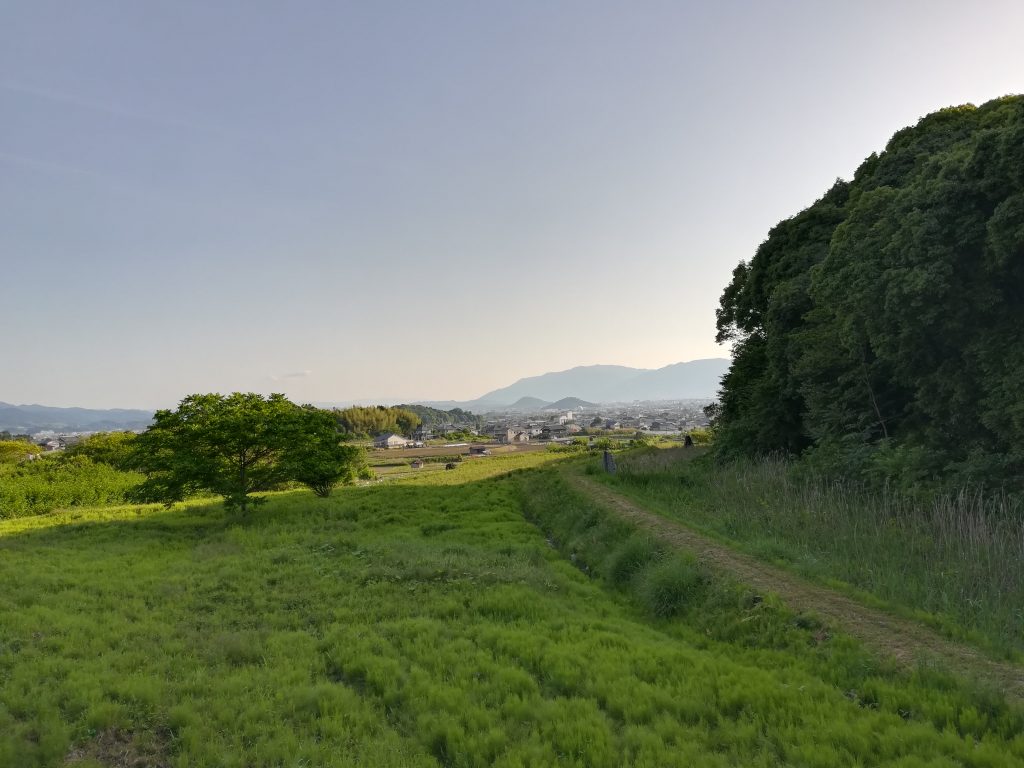
Looking south from the Yamanobe-no-michi Trail, which is thought to be the oldest road in the country (Sakurai City, Nara Prefecture).
It is said that Nara Prefecture is the location where the country of Japan originated, with 3 major early capitals built here: Asuka-kyo (in modern-day Asuka Village), Fujiwara-kyo (in modern-day Kashihara City), and Heijo-kyo (in modern day Nara City). However, the history of human activity in Nara far predates the formal establishment of country of Japan, and it is likely that a diverse amount of different peoples and cultures existed in this area (and the wider Japanese archipelago) in past times.
So, where can you go to see such history in Nara Prefecture? Please read on for more info about each ancient historical period and the historical sights associated with them that you can visit on your next trip to Nara.
Jomon Period (roughly 14,000 ~ 300 BCE)
The people categorized as “Jomon” are believed to have lived throughout the Japanese archipelago, and are actually named after their distinct pottery, which is the oldest known type of ceramics found in Japan and among the oldest in the entire world. They were hunter-gatherers who lived off the land, building small villages in different locations nearby natural resources such as rivers. Numerous archeological digs have uncovered evidence of Jomon Pottery in different areas of Nara Prefecture, sometimes in lower layers of earth under other ancient archeological sites (such as the Fujiwara-kyo Imperial Capital Ruins, or the Imperial Villa of Miyataki).
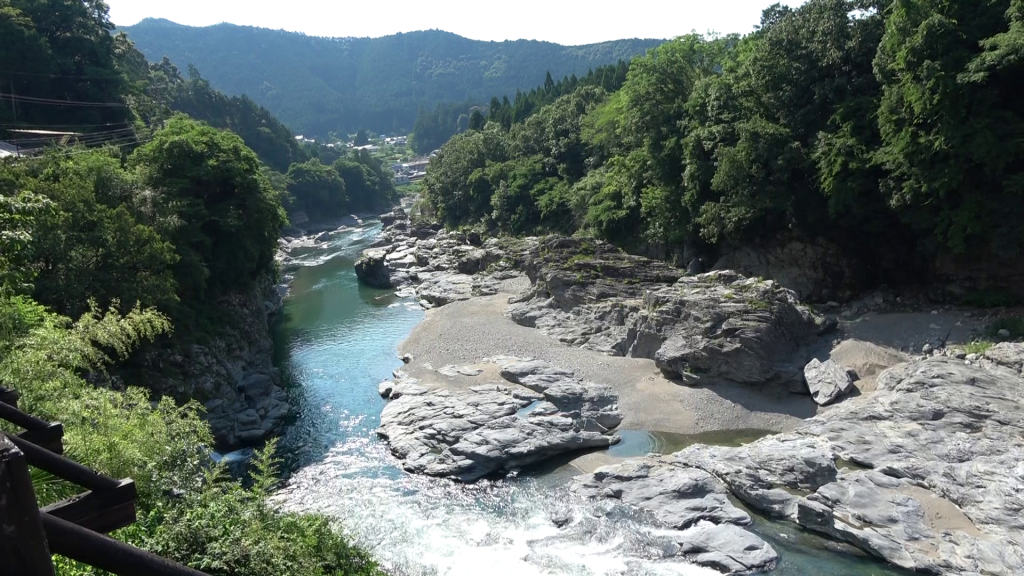
Looking over the Yoshino River near the archeological site of the Miyataki Imperial Villa site where Jomon artifacts were also discovered (Yoshino Town).
In Nara, some of the more famous Jomon archeological sites include the Okawa Ruins of Yamazoe Village, along the Nabari River (in the mountains east of Nara City), the Kashihara Ruins (southeast of Mt. Unebi in Kashihara City), and the Miyataki Site (along the Yoshino River in the town of Yoshino). Among these, it is possible to visit the Okawa Ruins and see a recreation of a small Jomon period home and survey the site, which has now been turned into a recreational park. The site in Miyataki is basically just a grass field at this point, but the nearby Yoshino Historical Museum contains displays of Jomon pottery, among other artifacts found at the site. For an easy-to-access look at Jomon pottery, the Nara National Museum in Nara City also has excellent examples of Jomon pottery as part of its permanent collection.

Yoshino Historical Muesum in Yoshino Town. Unfortunately, there is currently no English-language support for the exhibits here.
Yayoi Period (300 BCE ~ 300 CE).
In contrast to the Jomon, the Yayoi period is characterized by the spread of agriculture throughout Japan and the use of more advanced tools and weapons, among other things. The origins of Yayoi peoples are not entirely clear, but leading theories suggest they came from China and the Korean Peninsula at first to the northern Kyushu, and eventually spreading east. It is thought that the Yayoi are the ancestors of those who would go on to create the country of Japan in the Nara Basin. There are numerous examples of Yayoi artifacts found throughout the country (the first discovered in the Yayoi area of Tokyo, hence the name), including Nara Prefecture.
There are various examples of Yayoi artifacts that can be found in local museums (Nara National Museum, Exhibition Room of Fujiwara Imperial Site, etc.), but perhaps the most interesting place to visit is the Karako-kagi Site in the countryside town of Tawaramoto. This location is believed to have been a fortified village, with moats and a multi-level wooden tower, suggesting that the architectural ability of the Yayoi era was fairly advanced. When visiting, you can look over the entirety of the site, including a recreation of the tower; there are even materials in multiple languages that explain the history and layout of the village. If all that was not enough, there is even a nearby museum where you can look over a model of what the village used to look like 2000 years ago. It is about a 20 minute walk to the Karako-kagi Site from Iwami Train Station.
One of the most fascinating bits of historica related to the Yayoi period is the legendary Kingdom of Yamatai, first established by the so-called “shaman-queen” Himiko (170 -248 CE), who may very well have been the first ruler of what would later become the country of Japan. Records don’t exist of Queen Himiko in Japanese history, but there are Chinese historical records of trade with this Himiko, who supposedly united the warring kingdoms of Japan under her rule. There is still debate as to her existence at all, or where her kingdom was located, but one leading theory is that it was in Nara, and that her tomb was in Hashihaka Kofun (Sakurai City, Nara Prefecture), which is believed to be the first kofun-style burial mound ever constructed in Japan.
Kofun Period 300 ~ 538 CE
The Kofun Period is characterized by, among other things, the creation of distinct megalithic tomb mounds, known as “kofun,” throughout Japanese archipelago. It was also a time when horses were believed to have been first introduced into the country, as evidence of artifacts related to the use of these animals were found buried in tombs from this time, but not in the previous Yayoi period.
Many of these huge kofun mounds, with their distinct keyhole shape, can be found in Nara Prefecture. A beautiful hiking course that passes by a number of kofun tomb mounds is the Yamanobe-no-michi Route, which runs from Nara City in the north, all the way to Sakurai City in the south. This course is commonly called the “oldest road in Japan” and follows the cove of the mountains on the eastern side of the Nara Basin. The recommended hiking course for this route is between Tenri Train Station and Miwa Train Station, as it is especially scenic, has proper signage in English, and passes by an abundance of important historical sites.
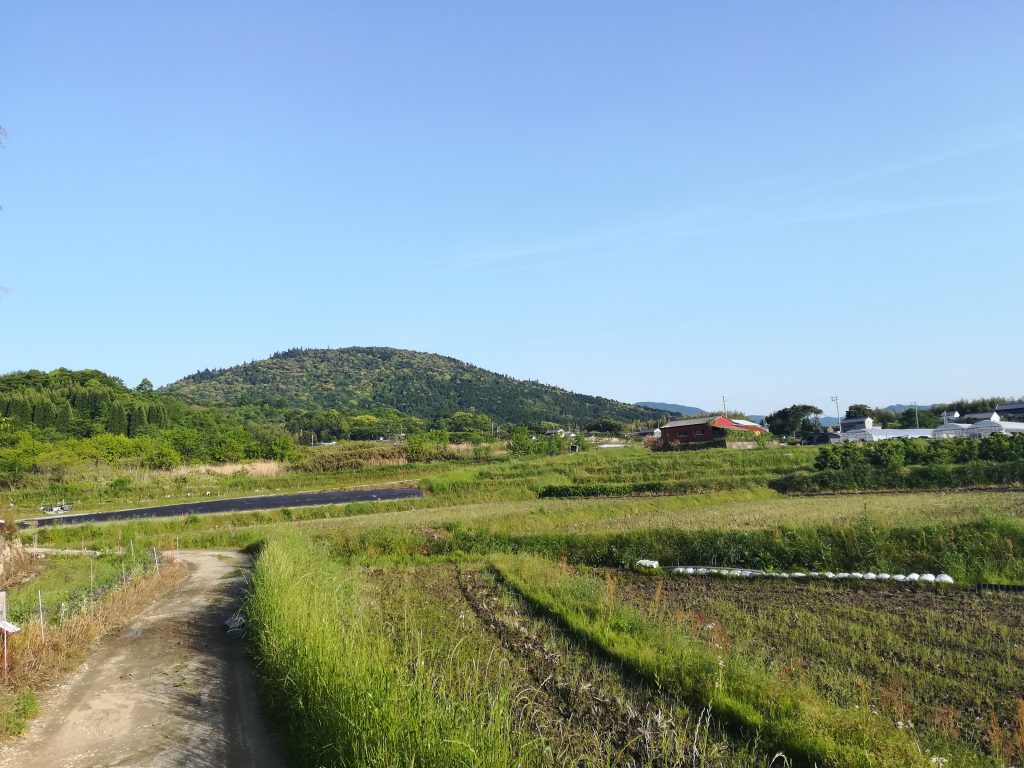
Along the Yamanobe-no-michi Trail, thought to be the oldest road in the country. The amount of significant history this road passes by, including ancient kofun tomb mounds, Shinto shrines, and Buddhist temples, makes it one of the most interesting routes to walk in Japan for the history lover.
Although technically thought to be a tomb mound built for for someone who lived in both the Kofun and following Asuka periods, the Ishibutai Kofun of Asuka is highly unusual for the fact that you can actually enter the tomb chamber and inspect the ancient stonework for yourself. All that remains of the mound is the stone tomb, whose ceiling pokes above the ground. It is theorized that this tomb belonged to a member of the Mononobe Clan, who ended up on the losing side of an early war in Japanese history, thus perhaps explaining why this kofun fell into disrepair.
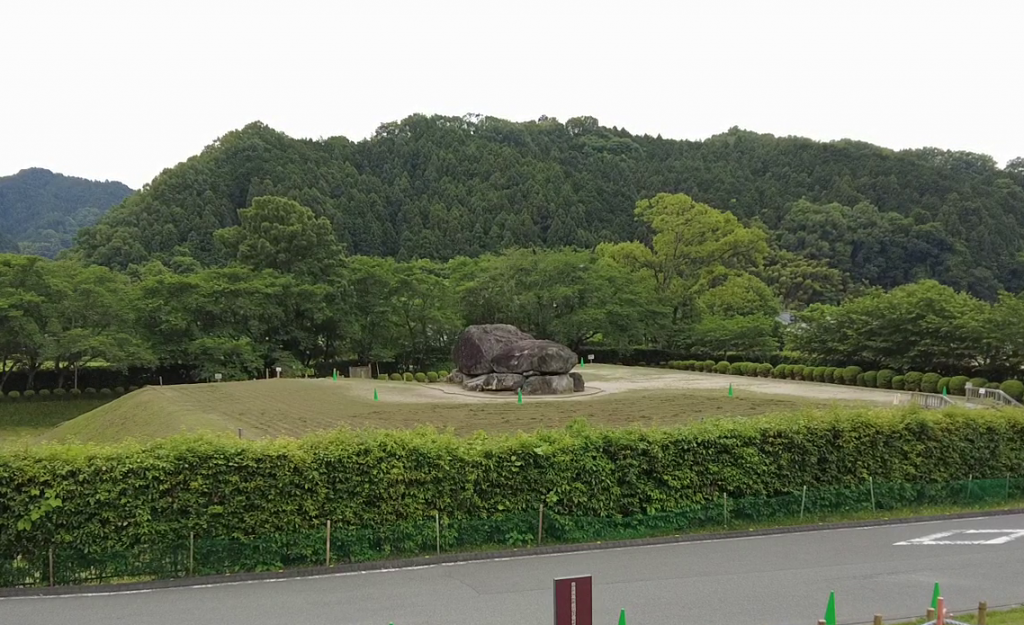
Ishibutai Kofun Tomb Mound in Asuka Village. It requires and entrance fee to enter, but is one of the exceedingly rare examples of an ancient stone tomb that is actually visible and can be inspected both inside and out by visitors.
Asuka Period 538 ~ 710 CE
The Asuka period is named after the village of Asuka in Nara Prefecture, where the first known capital of Japan (Imperial Palace) was established and was a critical time to the formation of the country in a variety of ways. The recent introduction of Buddhism into Japan sparked a conflict between those who supported Shinto and those who supported Buddhism, with the later emerging victorious in 587 CE. This lead to a government policy of backing Buddhism as an official religion of the country, and the construction of many Buddhist temples.
The figure given much of the credit for the victory of the Buddhist forces and the subsequent establishment of the religion in the country is a fellow by the name of Prince Shotoku (574 -672), who is legendarily reported to have been a sort of pious wunderkind of government policy. One story about Prince Shotoku is that he could actually listen to 10 different people talk simultaneously and make sound decisions regarding each issue he heard. He also is said to have ordered diplomatic missions to Sui China, to treat as equals and facilitate further importation of cultural ideas. Funnily enough, Prince Shotoku’s letter was reportedly at first not well received because he addressed the letter as the Land of the Rising Sun (Japan) contacting the Land of the Sinking Sun (Sui China).
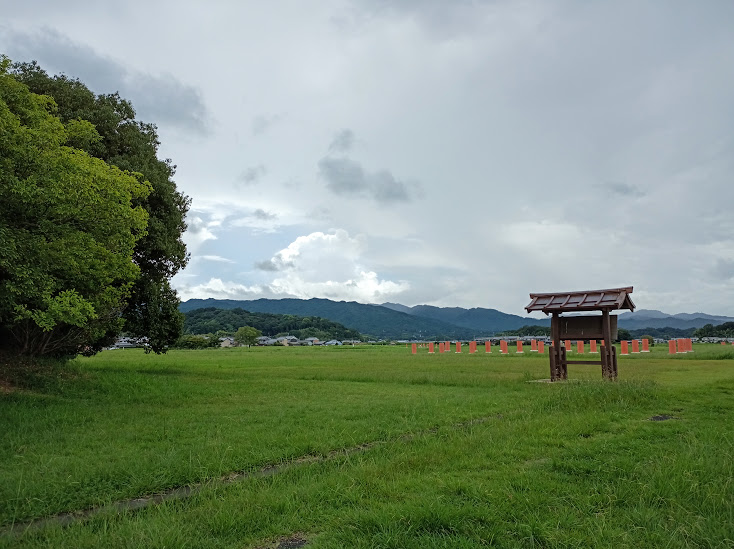
Fujiwara-kyo Imperial Palace archeological site in Kashihara City. It is thought that this city was the first official planned Imperial capital city modeled after the contemporary Chinese model.
Archeological sites to visit associated with the Asuka Period include the Asuka Itabuki-no-miya Palace Ruins in Asuka Village and the Fujiwara Imperial Capital Ruins in Kashihara City. Though standing buildings are long gone, the remarkable architectural foundations and layout of some structures have been made visible for visitors to see. The ridgeline temple district of Yoshinoyama is believed to have been established as a base for Shugendo religious practices in the late Asuka period.

Statue of En no Gyoa (En the Ascetic), the legendary wizard-like figure of the Asuka period who is credited with having established Shugendo religious practices in Nara’s southern mountains.

Yoshinoyama (Yoshino Town) in the spring. Kinpusen-ji Temple’s huge Zao-do Hall is visible in the back right.
Famed temples in Nara believed to have been founded by Prince Shotoku include Horyu-ji, Mt. Shigi’s Chogosonshi-ji, and Hoki-ji.
Asuka-dera Temple, located in Asuka Village, also dates back to the this period and considered one of the oldest temples (if not the oldest) in the country, going back to the year 596, and contains a giant bronze Buddha that still contains material in it which dates back to the year 606, when the original was made.
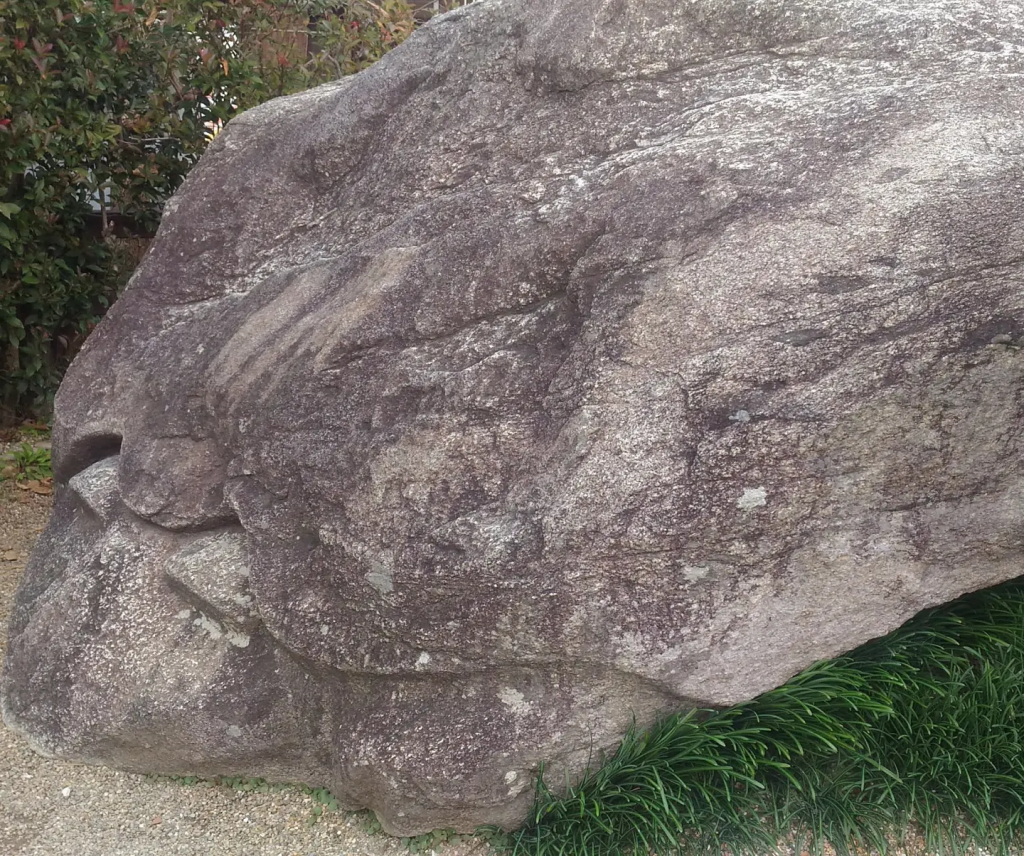
In addition to being home to ancient palace sites, temples, and shrines, Asuka is also home to a variety of mysterious rock carvings such as this stone, known as “Kame-ishi” (“Turtle Rock”). The origins of this carved rock are unknown, but is legendarily thought to be able to predict flooding based on which direction it is facing.
Nara Period 710 – 794 CE
The Nara period is named after the location of the Imperial Capital of the time, known as Heijo-kyo, which is in present day Nara City. Highlights of this period include the further expansion and acceptance of Buddhism by the general population, the creation of the first written national histories in the country, and a great push for importing knowledge from the Tang Dynasty in China.
Many of Nara City’s most famous sightseeing spots and features originated from this period, including Todai-ji Temple (famous for the Great Buddha of Nara), Kofuku-ji Temple, and Kasuga-taisha Shinto Shrine, which venerates a deity associated with the sacred deer that now are world famous for living in cohabitation with humans in Nara Park. Kasuga-taisha is also the patron shrine of the Fujiwara clan, one of the most influential royal families in Japan’s history that exerted great control over the government until the rise of the warrior-class shogun rulers at the end of the 12th century.
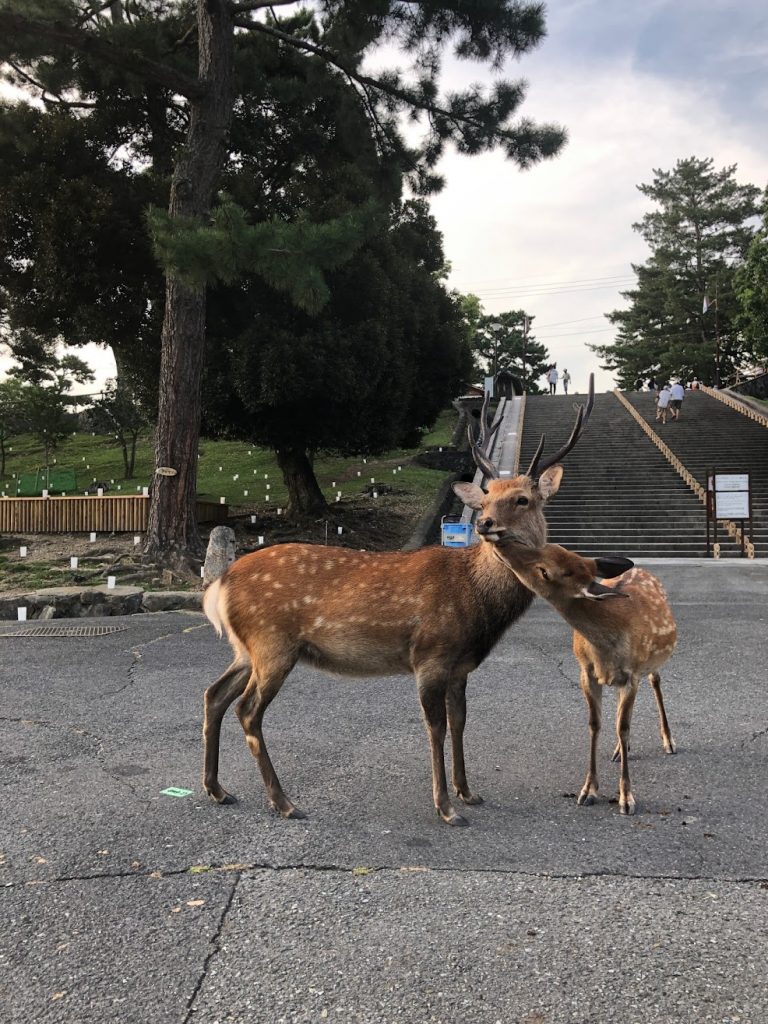
Sacred deer of Nara City.
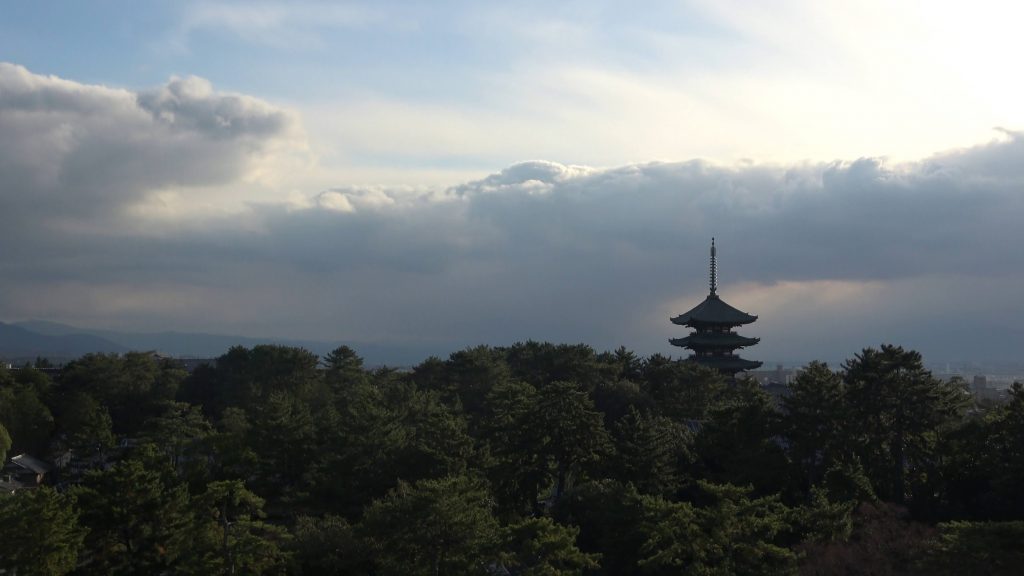
Looking over Nara Park and the famous 5 story pagoda of Kofuku-ji Temple.
The previously mentioned Heijo-kyo Imperial Palace Site is also preserved, with recreations of the walls and impressive gate structures, including Daigokumon Gate, the front entrance to the palace. The entire area can be walked through freely without charge, and is also used for various fun cultural events at different times of the year. There is also a historical museum that can be visited that contains a lot of information about the Palace grounds and the Nara period in general.
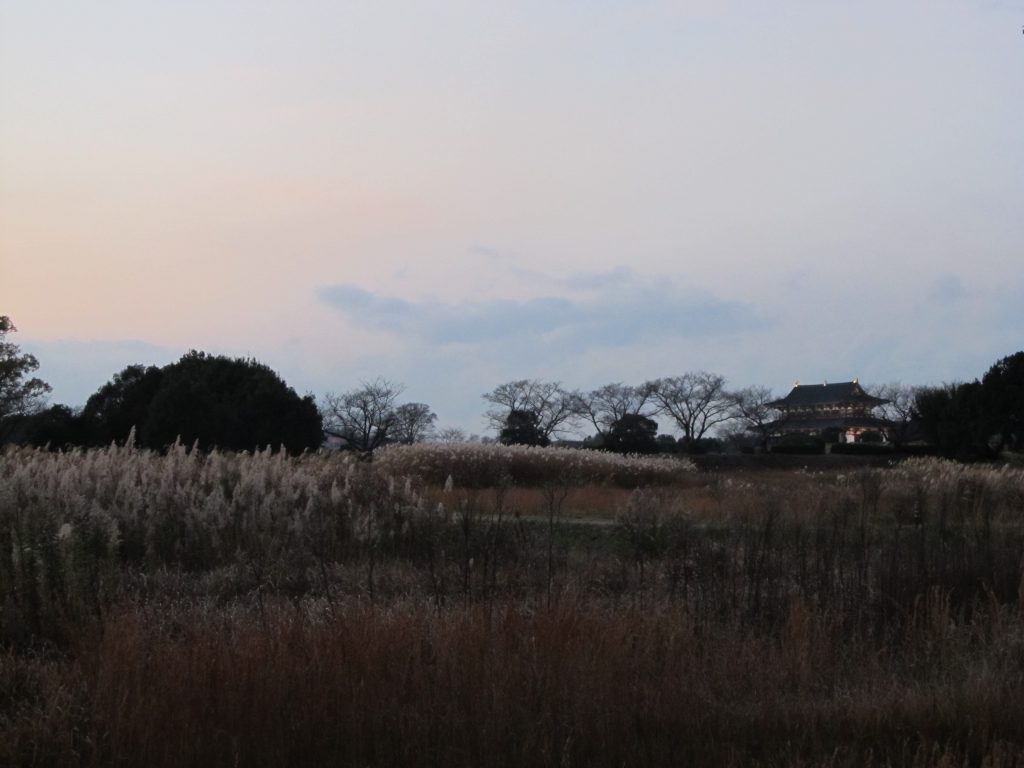
Heijo-kyo Palace Site in Nara City.
The above periods encompass a large part of Japan’s formative history and include a great deal of diversity of ideas spread across centuries of time. It is fortunate that many old historical sites associated with this periods are preserved and protected in Nara Prefecture, giving visitors the opportunity to learn first hand about Japan’s ancient past.
For more information about about how to best visit and enjoy the historic locations associated with the eras discussed above (including custom arranged tours), feel free to contact us anytime at Kansai Treasure Travel.

01
FIND YOUR FAVORITE
TRIP ON OUR WEBSITE.
SEND US AN INQUIRY.

02
PERSONALIZE THE TRIP
TO YOUR INTERESTS
WITH OUR CONSULTANT.

03
20% DEPOSIT TO CONFIRM.
BALANCE PRIOR TO ARRIVAL.
PAYMENT BY CC OR TT.

04
WE WILL
MEET YOU
AT THE AIRPORT.

05
DISCOVER THE
TREASURES!